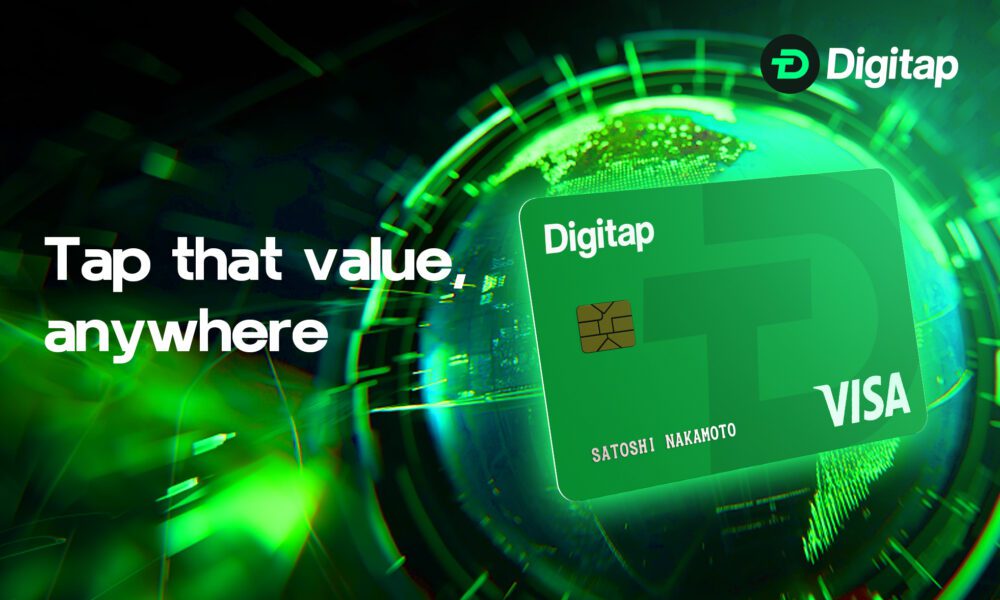A significant amount of the food produced for human consumption never reaches a plate, wasting resources and contributing to emissions. The problem with this waste comes from the lack of visibility in the supply chain. Missing or inaccurate data leaves spoilage and recalls to chance.
Blockchain technology provides an auditable source of truth. By anchoring temperature logs and transactions to immutable records, blockchain can reduce spoilage and enhance handling throughout the supply chain.
The Anatomy of a Wasteful Supply Chain
A startling share of edible food is wasted globally, costing the world’s economy approximately $1 trillion each year. The financial cost of food waste is a significant problem, as it poses a substantial burden on the economy and climate. It strains farmers’ margins, drives up prices for buyers, and contributes an estimated 8% to 10% of global greenhouse gas emissions (GHGs) across the food system.
Much of this food waste occurs before products reach store shelves. Studies consistently estimate that losses between farm and fork are approximately 40% in some product categories, driven by a combination of the following inefficiencies and points of failure.
Overproduction and Farm-Level Losses
Farmers frequently plant and harvest to meet uncertain contracts and seasonal demand peaks. That hedging can create surpluses without a ready buyer. Cosmetic standards also mean perfectly edible produce is often rejected at the wholesaler or retailer gate. Add unfavourable weather, pest pressure or labour shortages, and whole fields go unharvested. These are losses that begin the waste cascade long before logistics are involved.
Inefficiencies in Logistics and Storage
Unsplash.com
Cold-chain gaps — from lack of temperature monitoring to poorly insulated packaging — lead to spoilage and food waste. Other inefficiencies that result in losses from perishable goods include improper inventory handling and prolonged transit times.
Whether it is damage to goods during loading and unloading or a routing delay, these issues can render fresh produce unsellable by the time it arrives. While these operational problems may seem insignificant, they can escalate quickly in intricate supply chains, where a single handoff can dramatically alter shelf life.
Lack of Real-Time Data and Siloed Communication
Many supply chains still run on disconnected platforms that are slow to update. Without a shared, timely view of inventory, temperature logs or expected arrivals, stakeholders often make conservative decisions, such as overordering, diverting shipments or discarding suspect lots. This visibility gap is because they cannot reliably assess risk, which makes demand forecasting and rapid redistribution nearly impossible.
Traceability and Risk Management Challenges
When a safety issue emerges, slow or incomplete traceability can lead to broad recalls and precautionary disposals. In global supply chains with numerous intermediaries, identifying a single contaminated batch can require days of manual reconciliation — a time-consuming process during which more product spoils. The result is a significant environmental and economic loss, which also diminishes consumer trust and increases compliance costs.
What Is Blockchain and Why Is It the New Recipe for Transparency?
Blockchain is a shared digital ledger that records transactions in a tamper-evident, time-stamped way. Instead of a single party holding the only copy of a record, multiple participants maintain synchronised copies, so every change is visible. That simple shift from siloed ledgers to a shared source of truth is what makes the technology useful for tracing food from field to fork.
Several technical features make blockchain a good fit for food supply chains. Immutable entries and cryptographic time-stamps create an auditable provenance trail, allowing buyers to verify the origin and movement of a product. That helps validate origin claims and reduce fraud.
Permissioned chains enable companies to share essential data with partners while maintaining the privacy of sensitive business details. Smart contracts also automate rules. For example, payments are released when a shipment hits a certified temperature window. When combined with Internet of Things (IoT) sensors, blockchain can anchor real-time telemetry to an unchangeable record.

Researchgate.net
With global food production projected to increase by 60% by 2050, these capabilities translate into considerable benefits for food businesses. Faster, narrower traceability reduces the scope of recalls and the amount of product discarded. Additionally, improved visibility of cold-chain performance enables teams to reroute or reprioritise shipments before spoilage occurs. Simultaneously, successful deployments usually pair the ledger with existing enterprise resource planning (ERP), quality and logistics systems and clear governance.
The tech is an enabler but not a silver bullet. When companies adopt it incrementally and agree on data standards, blockchain becomes a tool for cutting waste, rebuilding trust and turning transparency into commercial value.
The Blockchain Pioneers Making a Difference
Several blockchain platforms are already moving the needle on provenance, traceability and cold-chain monitoring. The following platforms are the most widely adopted in food supply chains.
1. IBM Food Trust
IBM Food Trust is an enterprise-focused blockchain network that connects growers, processors, distributors and retailers so they can share verifiable provenance and transaction records without exposing sensitive business data. The platform is compatible with governance, data standards and developer tooling, so organisations can onboard at scale while preserving role-based access and auditability.
The network is best known for its work with large retailers and consumer packaged goods (CPG). For example, Walmart’s pilots with IBM demonstrated a multiday provenance search within approximately 2.2 seconds, which the giant retailer later required for some fresh produce suppliers. Together, IBM and Walmart demonstrated how ledgered records — combined with standardised supplier inputs — speed investigations and reduce the scope of precautionary disposals.
2. VeChain
VeChain runs a public blockchain called VeChainThor that pairs on-chain records with physical identifiers, including NFC tags, QR codes and IoT sensors. A single pallet or bottle can carry verifiable history from producer to buyer.
Its dual-token model separates value transfer from transaction costs, which helps keep operational fees predictable for enterprises. Its ToolChain and other developer tools also maintain traceability and anti-counterfeiting functions, allowing companies to onboard without building a ledger from scratch.
Adoption has been strongest in markets that favour mobile-first verification and visible provenance, where brands use VeChain to publish product certificates, carbon or sustainability metrics, and authenticity checks that consumers can view with a scan. Like other platforms, its benefits depend on standardised data inputs and IoT feeds. When those pieces are in place, VeChain can deliver proof of on-package scans that reduce fraud and speed recalls.
3. OriginTrail
OriginTrail is not just another ledger — it builds a decentralised, machine-readable knowledge graph that links identifiers, certificates and event records across otherwise disconnected systems. By mapping products and shipments into a common graph, OriginTrail facilitates the reconciliation of different ID schemes and provides a queryable history for each item. It is exactly the kind of interoperability that the organic food sector needs to prove provenance and compliance at scale.
This approach plays well with sustainability and certification programmes. When organic certificates and audit records are attached to a product’s graph node, buyers and certifiers can verify claims without having to wade through siloed files. This immediate gain of traceability becomes a powerful tool for faster recalls and narrower disposals.
4. Alibaba’s Food Trust Framework
Alibaba’s Food Trust Framework is built on AntChain and the company’s logistics and e-commerce stack. It is designed to bridge international producers and Chinese buyers by attaching verifiable origin, certification and shipment data to products sold through Alibaba’s platforms.
The system bundles customs records, supplier certificates and on-route logistics data so a scan by a Chinese consumer can reveal an auditable history. Because it plugs into Alibaba’s retail ecosystem, the framework delivered a consumer-facing benefit quickly. The verified provenance becomes a marketing claim on product pages and on-package QR scans, reducing counterfeits.
5. ForestGuard
ForestGuard is an open-source project built specifically to help the coffee supply chain manage sustainability and prevent deforestation. It combines geospatial data, farm-level mapping and verifiable digital records. This enables roasters, traders and certifiers to link a bag of coffee beans back to a plot of land and monitor its land-use history. By anchoring location data and verification events to an auditable ledger, ForestGuard makes it harder for illegally cleared land to be passed off as producing compliant coffee.
That niche focus makes it useful for brands and sourcing programmes that need defensible, consumer-facing claims about forest protection. In combination with farm audits and third-party certifications, ForestGuard reduces the time required to validate origin claims and helps target remediation where risk is identified.
6. Farm-to-Plate
Farm-to-Plate focuses on closing the loop between small and midsize producers and nearby buyers by combining simple product IDs, mobile scanning and lightweight ledger records. Instead of targeting global retailers, the platform prioritises regional markets and last-mile logistics. Growers can register lots with a few taps and make provenance visible to local buyers and co-ops without heavy IT overhead.
This local orientation reduces waste in two ways. First, better visibility enables buyers to match demand with available supply more quickly and reroute near-expiry items to high-turnover outlets. Secondly, direct seller-to-buyer channels improve farmer margins, making producers less likely to overharvest or discard imperfect but edible products. Paired with based cold-chain monitoring and clear governance, Farm-to-Plate makes traceability practical for markets.
Turning Transparency Into Tangible Waste Reduction
Blockchain may not be the cure-all, but it changes the economics of information in food systems. Recalls and spoilage diminish when enterprises and regional platforms adopt shared data standards and pair ledgers with IoT and governance. As a next step, it will come down to supply chain leaders agreeing on data formats and piloting focused use cases that deliver reductions in waste.











